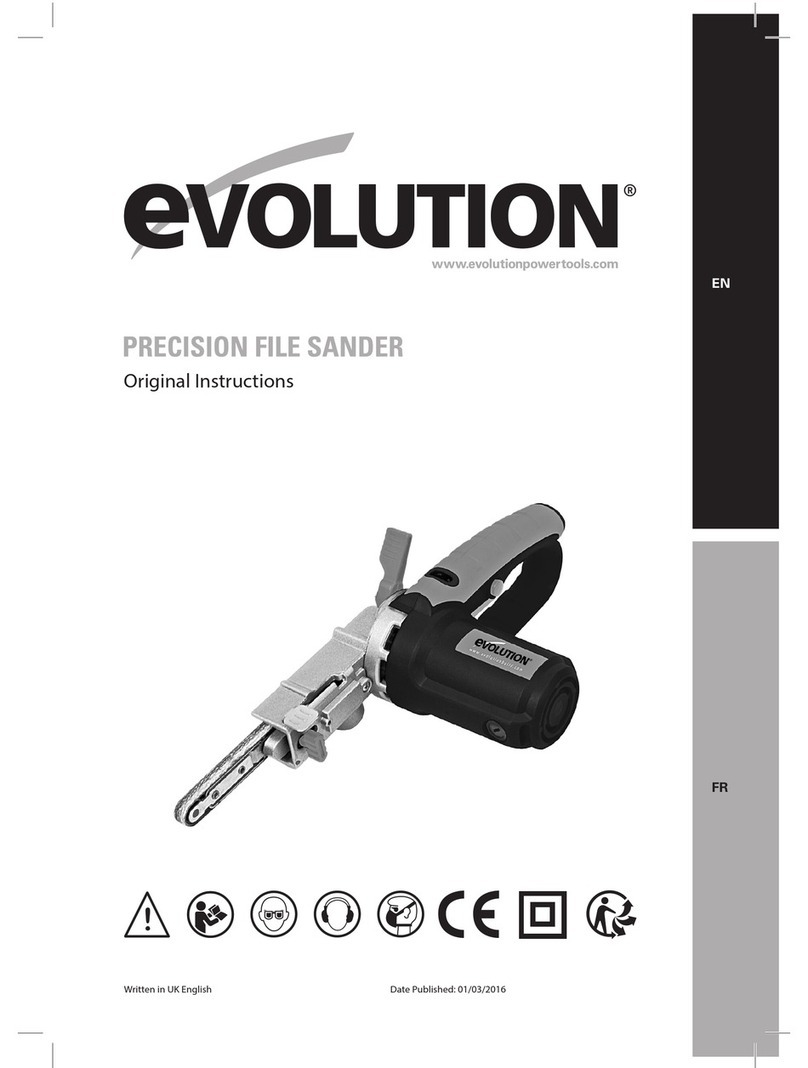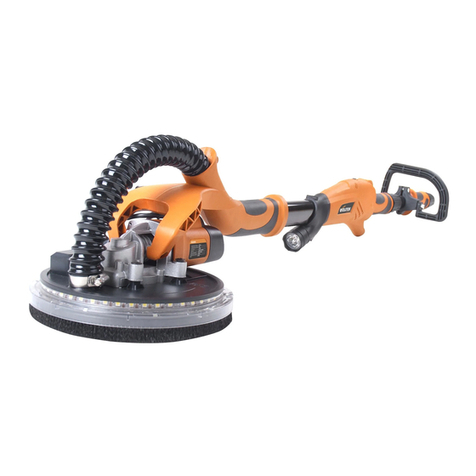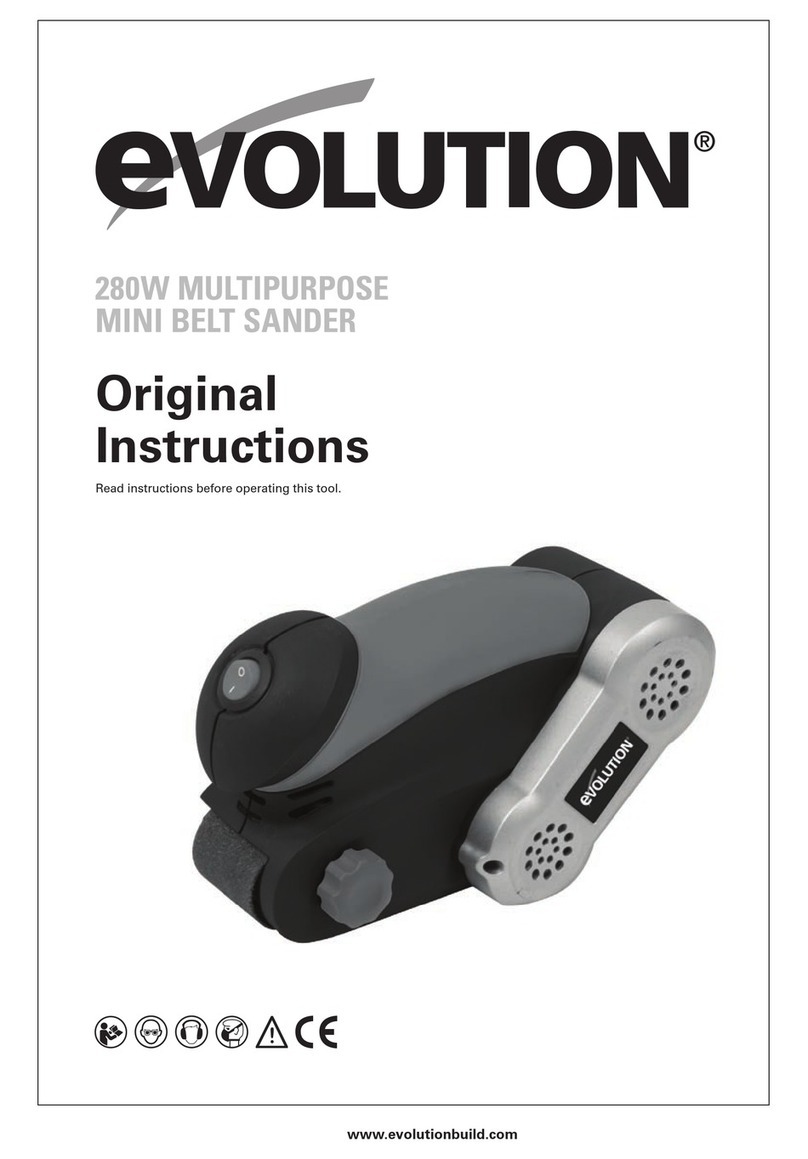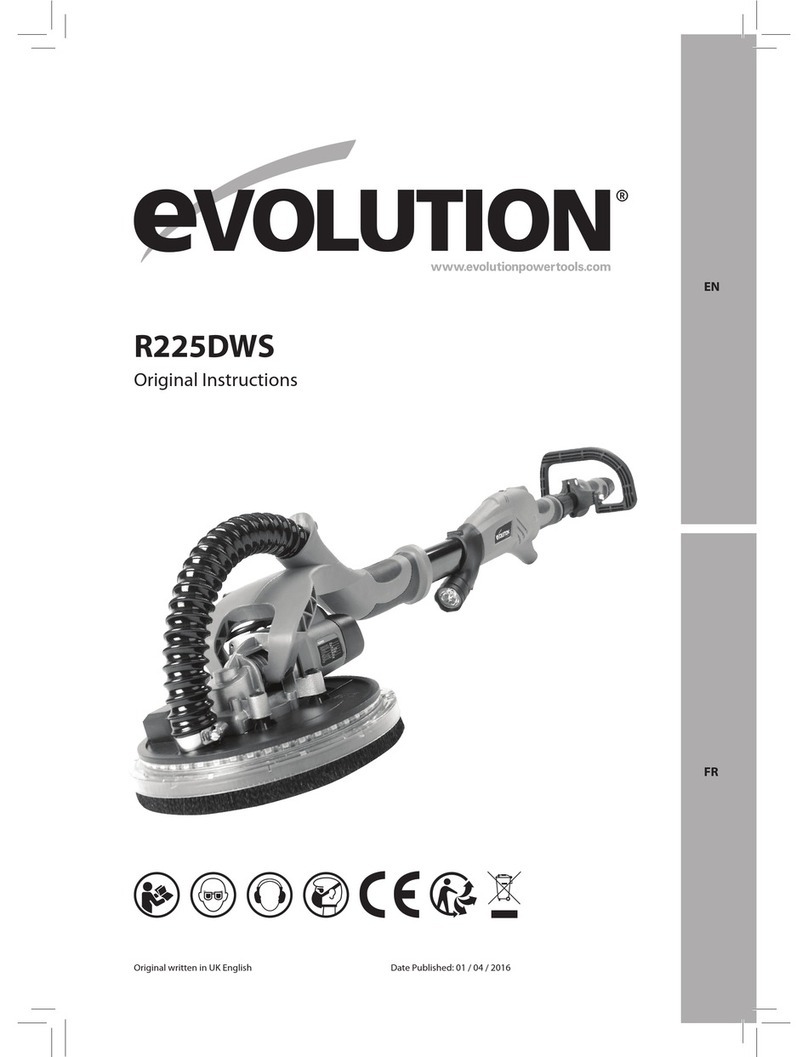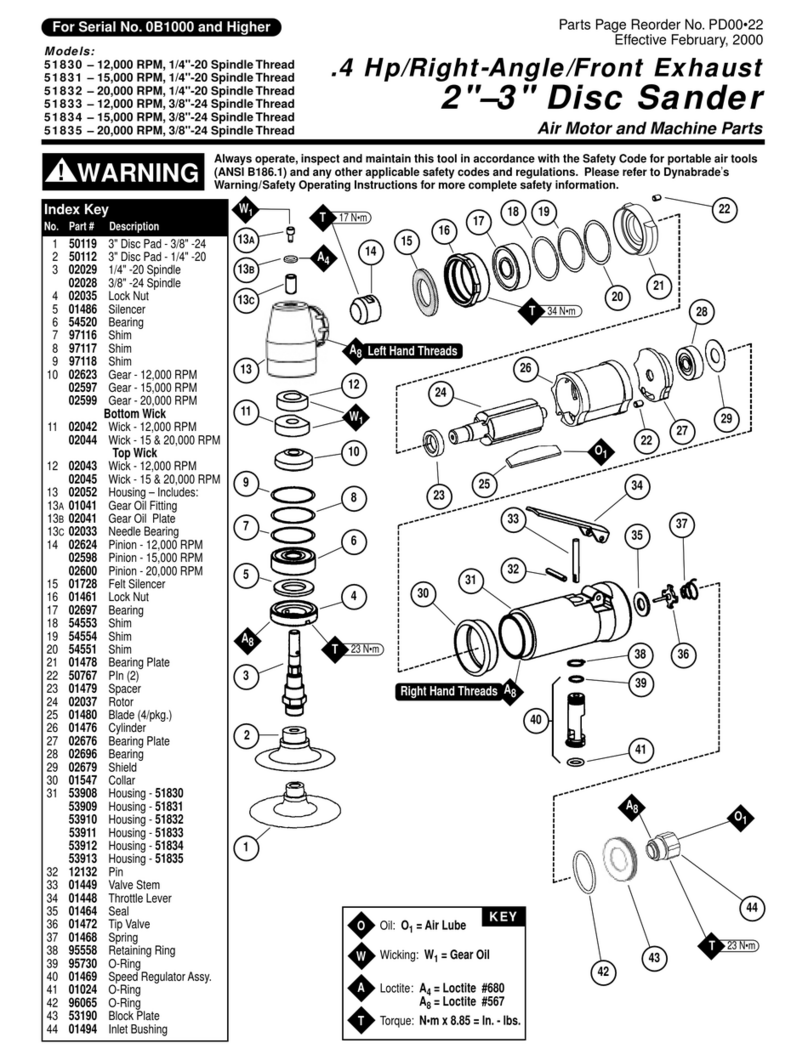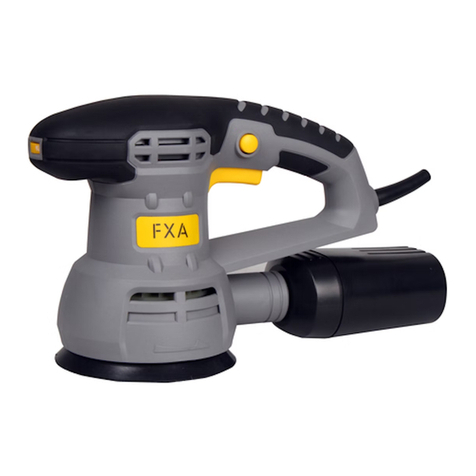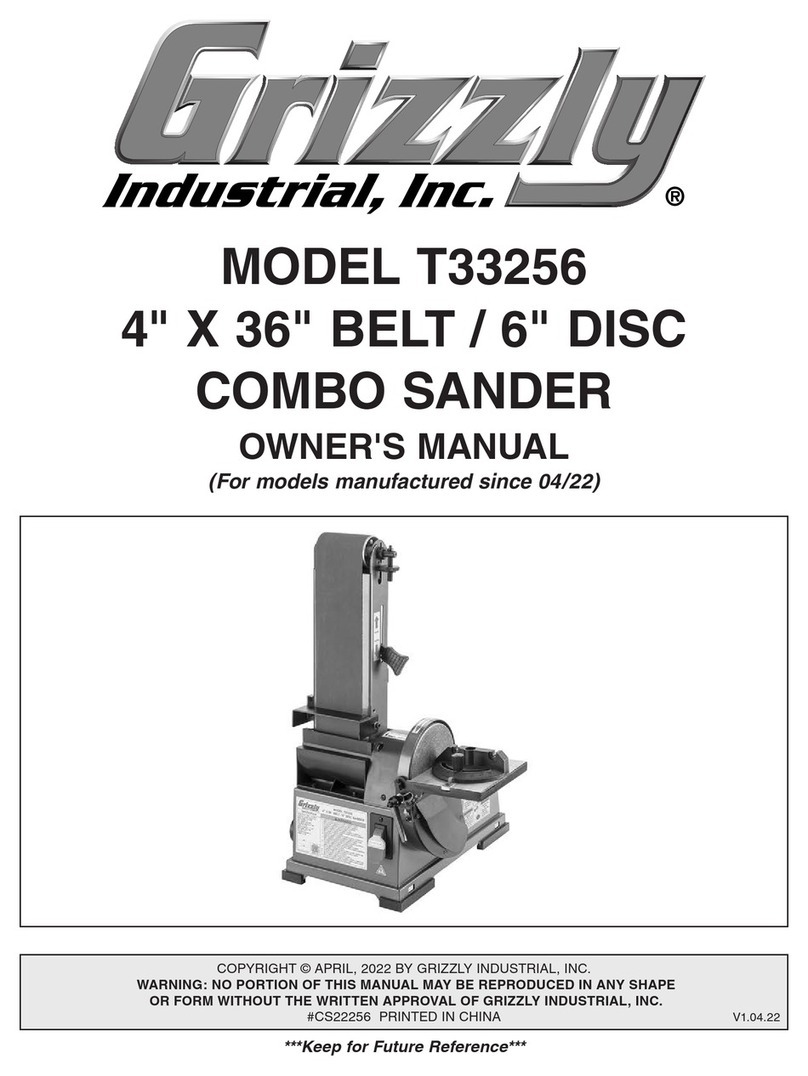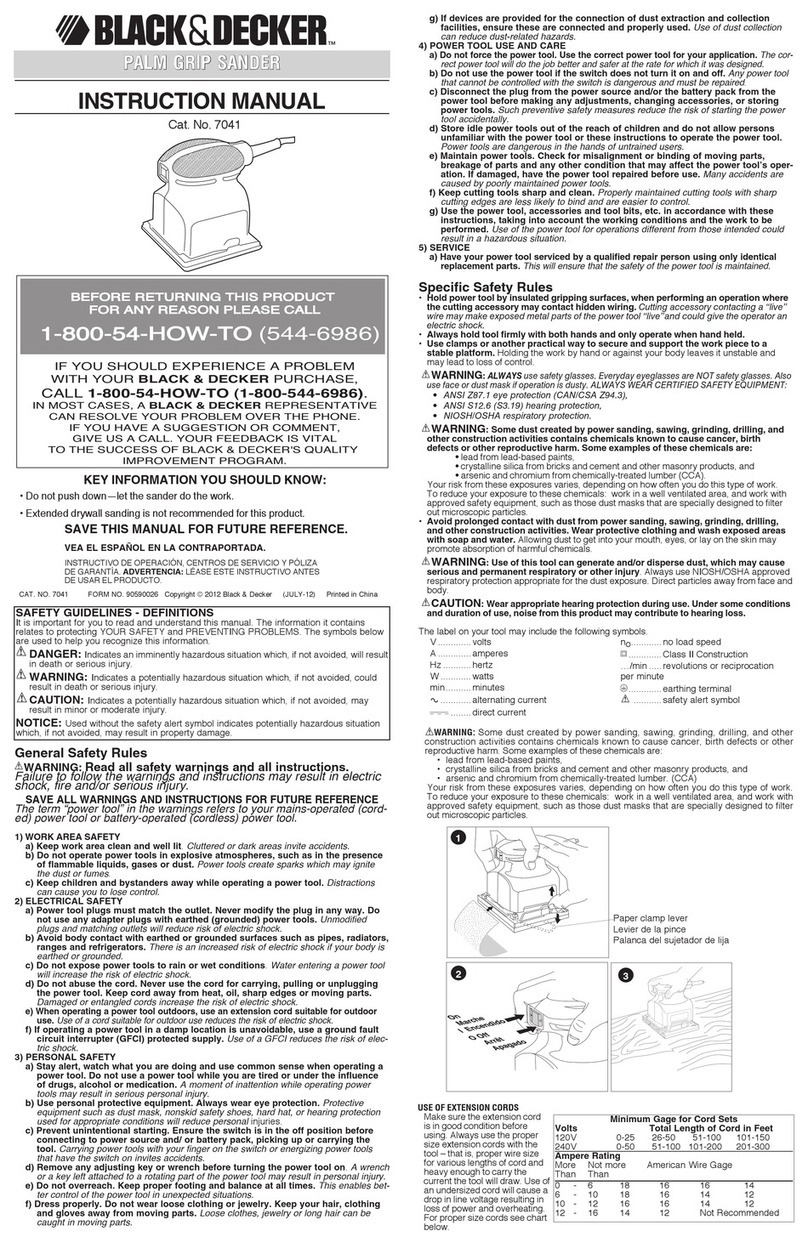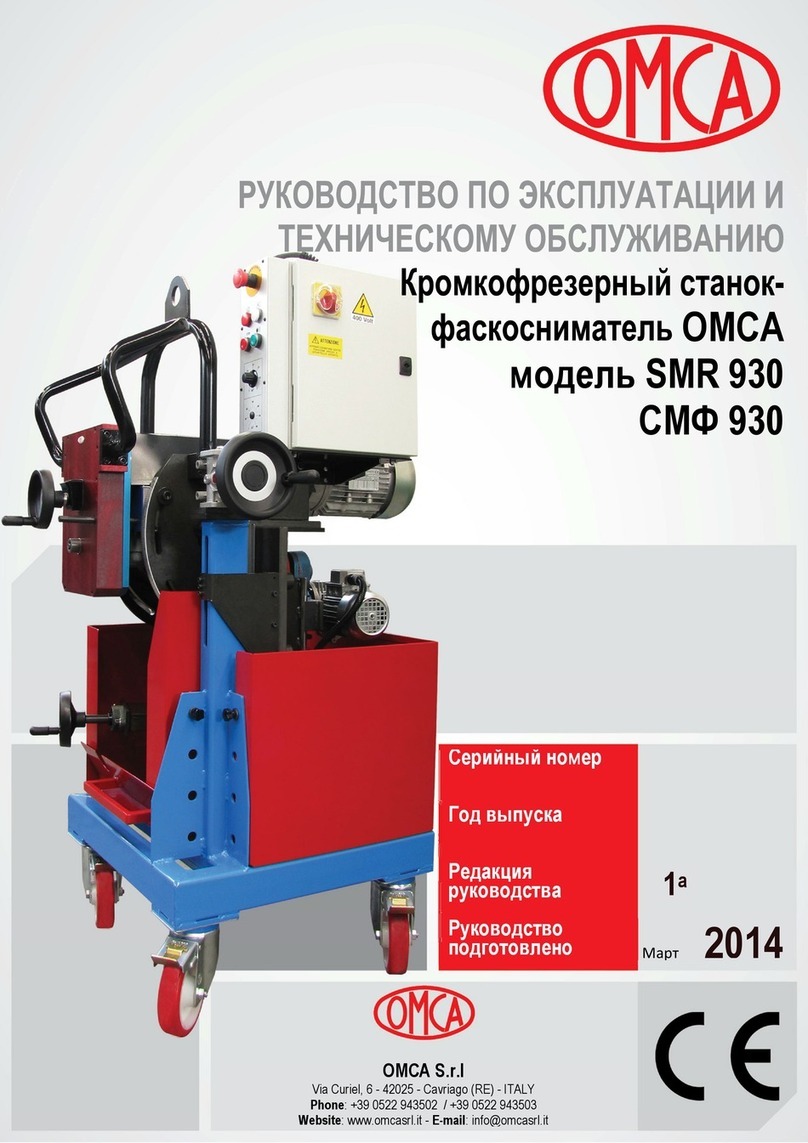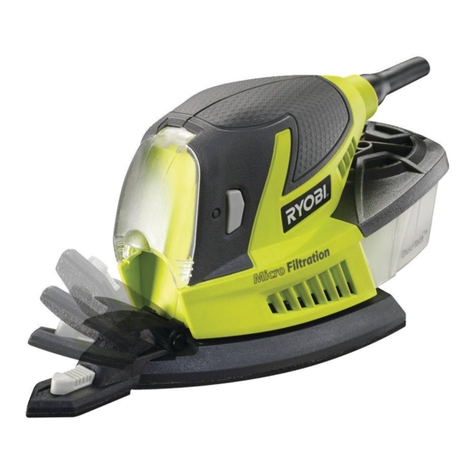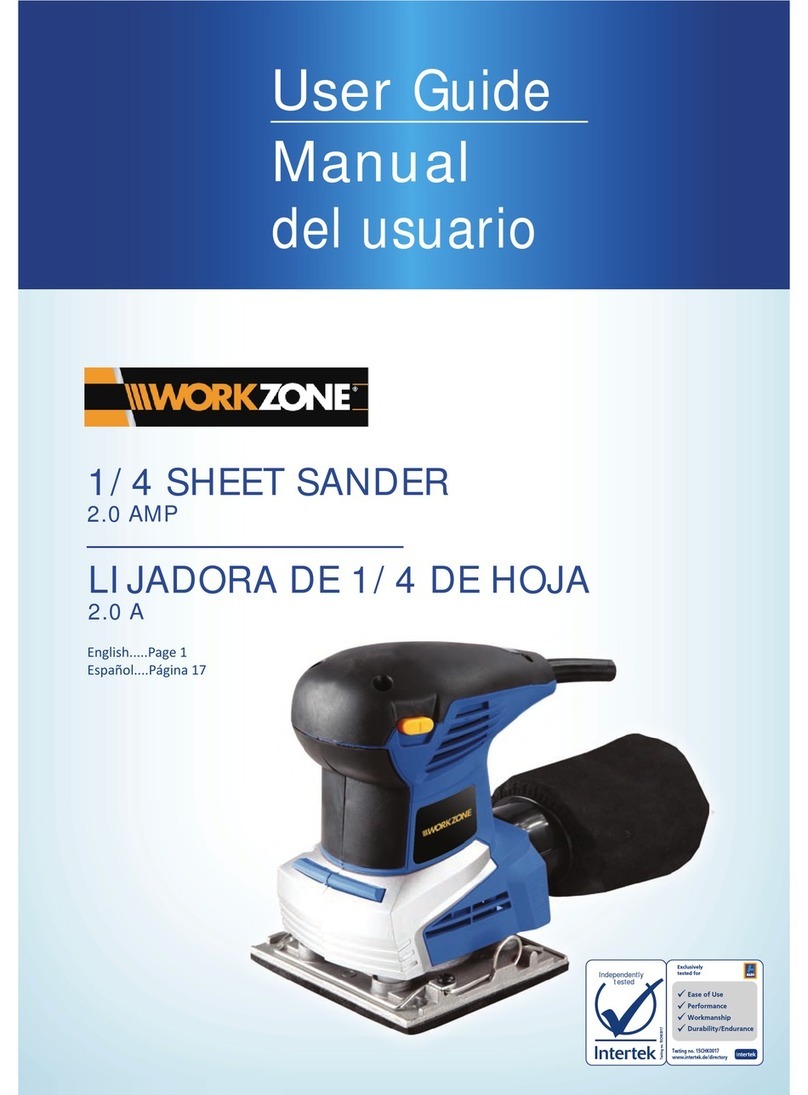
7
increase the risk of electric shock.
8. Always make sure that any extension
cord you use is in good condition, and if
used outdoors is of a suitable type, and
so labelled. When using an extension cord
be sure to use one that is heavy enough to
carry the current that your tool will draw.
An undersized cord will cause a drop in
line voltage, resulting in loss of power and
possible overheating.
9. Do not use the tool while tired or
under the influence of drugs, alcohol or
any medication. Following this rule will
reduce the risk of electric shock, fire or
serious personal injury.
10. Save these instructions. Refer to
them frequently and use them to instruct
others who may use this tool. If someone
borrows this tool, make sure they have
these instructions also.
11. Ensure that the operator is adequately
trained in the use adjustment and
operation and operation of the machine.
All operators should have read and understood
the instructions contained within this manual,
before commencing operations.
12. Ensure that the workplace lighting
is adequate, and/or provide extra
lighting for the immediate work area.
Poorly illuminated workplaces are inherently
dangerous.
13. Keep the work area well ventilated.
If possible open some windows and put an
exhaust fan in one of them to move air from
the inside to the outside. Post WARNING
notices to alert bystanders that potentially
hazardous operations are taking place nearby.
14. Use a vacuum dust extraction
machine in conjunction with this sander.
The workplace should be kept as clean and
dust free as possible. A dust filled room has
an explosive potential.
15. Ensure that there are no sources of
ignition nearby. Dust suspended in the air
has an explosive potential.
16. Do not connect a domestic vacuum
cleaner to this machine. A domestic
vacuum cleaner is not suitable for the
collection of drywall dust particles.
Safety Warnings Common
for Sanding Operations:
a) This power tool is intended to
function as a sander tool. Read
all safety warnings, instructions,
illustrations and specifications
provided with this power tool.
Failure to follow all instructions listed below
may result in electric shock, fire and/or
serious injury.
b) Operations such as grinding, sanding,
wire brushing, polishing or cutting-off
are not recommended to be performed
with this power tool. Operations for
which the power tool was not designed may
create a hazard and cause personal injury.
c) Do not use accessories which are not
specifically designed and recommended
by the tool manufacturer. Just because
the accessory can be attached to your
power tool, it does not assure safe
operation.
d) The rated speed of the accessory
must be at least equal to the maximum
speed marked on the power tool.
Accessories running faster than their rated
speed can break and fly apart.
e) The outside diameter and the
thickness of your accessory must be
within the capacity rating of your power
tool. Incorrectly sized accessories cannot
be adequately guarded or controlled.
f) The arbour size of wheels, flanges,
backing pads or any other accessory
must properly fit the spindle of the
power tool. Accessories with arbour holes
that do not match the mounting hardware
of the power tool will run out of balance,
vibrate excessively and may cause loss
of control.
g) Do not use a damaged accessory.
Before each use inspect the accessory
such as abrasive wheels for chips and
cracks, backing pad for cracks, tear
or excess wear, wire brush for loose
or cracked wires. If power tool or
accessory is dropped, inspect
HAND HELD DRYWALL SANDER
SAFETY INSTRUCTIONS FOR ALL OPERATIONS UK


